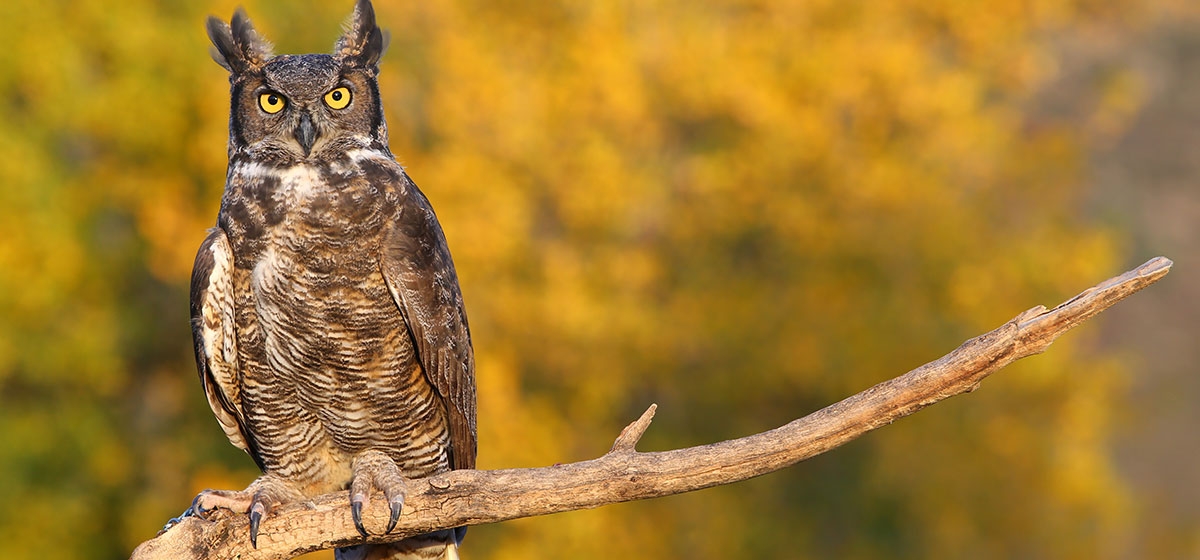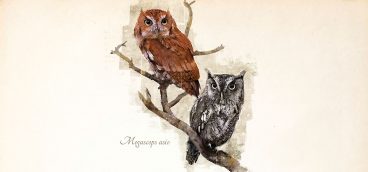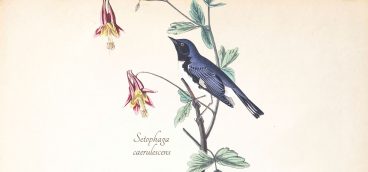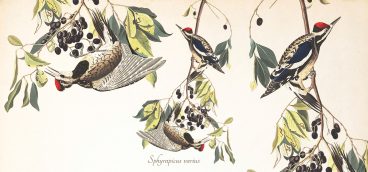Autumn Knights

When these nobles gather, they’re known as a parliament. They hold proceedings under cover of darkness and their debates typically end with sudden death for the commoners around them. Whoo are they? Owls, of course.
The Great Horned Owl is the tiger of the night skies. The last one I saw was perched on a phone pole on the South Side’s Carson Street. I thought it was a plastic decoy, there to scare off pigeons, but when it stretched its wings, I pulled over and watched it as it watched me. The annoyed owl peeled off, gliding above train tracks that must have been its hunting ground. Great Horned Owls are the size of basketballs, with wings almost four feet across. Their tufted horns are just feathers; their ears are hidden openings in the skull, one a bit higher than the other. This offset allows owls to hear in stereo and practice a kind of avian geometry that lets them triangulate through the darkness the precise location of that rustling mouse, nibbling rabbit or waddling skunk that’s about to become dinner. No other bird in our skies is as tough. Even one of our well-watched Peregrine Falcons on the Gulf Tower may have fallen to a Great Horned Owl.
By comparison, baby Eastern Screech Owls are fuzzy little acrobats. At dusk recently, they cavorted by a street light’s glow near the Frick Park bocce courts. Their newly plumed wings were just strong enough for awkward aerial skitters, and they caught themselves on high tree branches, relieved to still be above ground. Screech owls are common around here, so small and cryptic that they blend into the hollow of a dead tree trunk and are nearly invisible. They don’t screech but instead proffer gentle whinnies and bouncing trills that sound more like spring peepers or a child’s toy. Like all owls, they’re practiced predators, with keen vision and acute hearing that pinpoint insects, rodents and tiny morsels.
Snowy Owls are infrequent visitors to our area, living in the northern tier and Canada. They come here during winters when meals up north are scarce. The last Snowy Owl seen in these parts was perched on the old Nabisco factory along Penn Avenue in East Liberty. Made famous by its supporting role in the Harry Potter series, the Snowy is our heaviest owl, topping the scale at four pounds. Yes, just four pounds. Like most birds, owls are all fluff and feather, with honey-combed, hollow bones allowing them to stay aloft. And, on the coldest days, their bodies are swathed in blankets of warm air secured by their downy insulation.
Barn Owls and Barred Owls have names that sound alike, but they look quite different. Barn Owls have heart-shaped facial disks of white, edged in a ruff of cinnamon brown. The disks help focus sound to their amazing ear openings. Barred Owls take their name from the mottled color of their gray, white and brown feathers.Neither species is abundant in our area, but both have connections to Fox Chapel. Barred Owls have been heard in that borough but are more common far from the city. Barn Owls are being raised and studied by the Audubon Society of Western Pennsylvania at hidden sites in our suburbs and at Todd Sanctuary in Sarver, in hope of increasing their numbers.
Then there are Northern Saw-whet Owls, tiny birds that pass through our region. At three ounces, they barely register on a scale, unless it’s musical. They toot with beeps like a truck in reverse, and their rounded heads and yellow and black eyes are dramaticadaptations in these nocturnal hunters. The Pennsylvania license plates with the owl? Our Northern Saw-whet.
Long- and Short-eared Owls fill our parliament’s last seats. The Long-eared Owls are uncommon and lesser-known larger birds, which don’t have external ears. Like their cousins, their ear tufts are simply camouflage used to blend into their woodland habitats. Short-eared Owls tend to be found in grasslands and marshes, hunting by night and day. Their wing beats are less streamlined, almost breezy, and remind owl watchers of a giant moth. Rodents are their preferred take, and like all owls, they eventually cough up undigested globs of fur and bone—owl pellets—that can be dried, then dissected to study what’s been on the menu.





